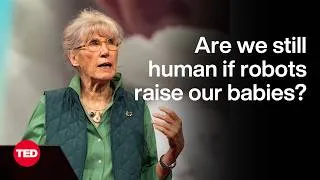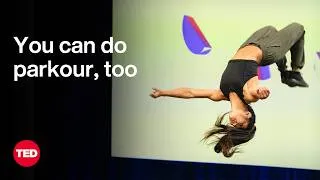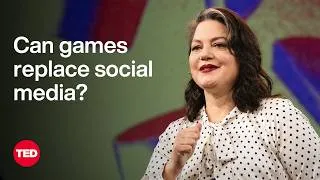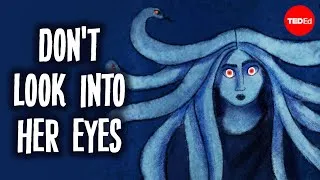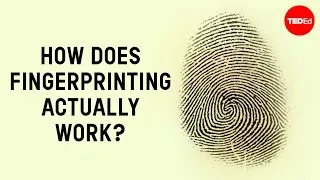请双击下面的英文字幕来播放视频。
00:00
Transcriber: Andrea McDonough
Reviewer: Jessica Ruby
0
0
7000
翻译人员: sherry lee
校对人员: Cissy Yun
00:14
One of the reasons that I'm fascinated by the ocean
1
14739
3052
我如此着迷于海洋的原因之一
00:17
is that it's really an alien world on our own planet.
2
17791
3114
在于这是我们这个星球上一个特别不同寻常的世界
00:20
From our perspective,
3
20905
1068
从我们的角度来说
00:21
sitting on the shoreline or even out on a boat,
4
21973
2164
坐在海岸边或在坐在船上出海
00:24
we're given only the tiniest glimpses
5
24137
1659
我们只在这些活动中
00:25
at the real action that's happening
6
25796
1790
看到了非常小的一部分
00:27
beneath the surface of the waves.
7
27586
2632
在海浪的表面之下
00:30
And even if you were able to go down there,
8
30218
1934
即使你能潜入海水中
00:32
you wouldn't see very much
9
32152
1302
你能看到的仍旧不多
00:33
because light doesn't travel very far in the ocean.
10
33454
2603
因为光线无法穿入海水太深的部分
00:36
So, to answer questions about how the ocean works,
11
36057
1909
因此,为了回答“海洋如何运作”这个问题
00:37
in my research, we use sound.
12
37966
2165
我们在研究里运用了声音
00:40
We use sonars that send out pulses of sound
13
40131
1992
我们用声呐,发送出脉冲声
00:42
made up of a number of different frequencies, or pitches,
14
42123
3110
这是由一些不同频率或音调组成的声音
00:45
that are shown with different colors.
15
45233
2291
它们由不同的颜色表现出来
00:47
That sound bounces off things in the habitat
16
47524
2144
这些声音在自然环境中不停反弹
00:49
and comes back to us.
17
49668
1627
然后弹回来
00:51
If it were to bounce off this dolphin,
18
51295
1736
如果它在海豚身上反弹
00:53
the signal we got back
19
53031
1232
我们得到的信号
00:54
would look very much like the one we sent out
20
54263
2058
会与我们发送出去的非常相像
00:56
where all the colors are represented pretty evenly.
21
56321
2706
所有颜色都非常均匀地分布
00:59
However, if we were to bounce
22
59027
1339
然而,如果我们使同样的声音
01:00
that same sound off of a squid,
23
60366
1696
在乌贼身上反弹
01:02
which in this case is about the same size as that dolphin,
24
62062
2972
而这个乌贼体积与海豚一样大
01:05
we'd instead only get the lowest frequencies back strongly,
25
65034
3368
反弹最厉害的只会是最低频率的部分
01:08
shown here in the red.
26
68402
1847
也就是红色的部分
01:10
And if we were to look at the prey of that squid,
27
70249
2167
如果我们观察乌贼的食物
01:12
the tiny little krill that they're eating,
28
72416
1944
也就是他们在吃的磷虾
01:14
we would instead only get the highest frequencies back.
29
74360
3052
我们得到的将会是最高频率的部分
01:17
And so by looking at this,
30
77412
1179
所以通过观察这些反弹
01:18
we can tell what kinds of animals are in the ocean,
31
78591
2565
我们就可以得出海洋里有什么样的动物
01:21
we can look at how dense they are,
32
81156
1595
我们可以得出它们的密度
01:22
where they are distributed,
33
82751
1201
它们的分布
01:23
look at their interactions
34
83952
973
它们交流的方式
01:24
and even their behavior
35
84925
1260
甚至它们的行为
01:26
to start to study the ecology of the ocean.
36
86185
3338
以研究海洋中的生态系统
01:29
When we do that, we come up with
37
89523
1431
当我们进行研究时,我们发现了一些
01:30
something sort of surprising:
38
90954
1783
令人有点意外的事情
01:32
on average, there isn't very much food in the ocean.
39
92737
2591
平均而言,海洋中并没有太多的食物
01:35
So even in places which we think of as rich, the coasts,
40
95328
2720
即使在我们认为富饶的地方,也就是海岸
01:38
we're talking about two parts of every million contain food.
41
98048
4557
那里所有的食物也只占了整个海洋的百万分之二
01:42
So what does that mean?
42
102605
1457
这意味着什么?
01:44
Well, that means that in the volume of this theater,
43
104062
2162
这意味着在这个讲厅中
01:46
there would be one tub of movie theater popcorn
44
106224
2727
只有一桶爆米花这么多的食物
01:48
available to be eaten.
45
108951
1879
可以吃
01:50
But of course, it wouldn't be collected
46
110830
1280
当然,这些食物不会给你
01:52
for you neatly in this bucket.
47
112110
1514
整齐的放在一个桶里
01:53
Instead, you'd actually have to be swimming
48
113624
1440
相反,你需要向威利·旺卡那样,在整个地方
01:55
through this entire volume Willy Wonka style,
49
115064
2818
到处游来游去
01:57
picking off individual kernels of popcorn,
50
117882
2297
捡起一颗颗爆米花
02:00
or perhaps if you were lucky,
51
120179
1499
而幸运的话
02:01
getting a hold of a few small clumps.
52
121678
2846
或许能得到一小块连在一起的
02:04
But, of course, if you were in the ocean,
53
124524
1495
当然,如果你身处海洋中
02:06
this popcorn wouldn't be sitting here
54
126019
1557
这些爆米花也不会就这样呆着不动
02:07
waiting for you to eat it.
55
127576
1577
等着你去吃
02:09
It would, instead, be trying to avoid becoming your dinner.
56
129153
3560
相反,它会极尽所能以避免成为你的食物
02:12
So I want to know how do animals solve this challenge?
57
132713
3384
所以我想知道动物们是如何解决这个难题的
02:16
We're going to talk about animals in the Bering Sea.
58
136097
2914
先来了解一些白令海峡里的动物
02:19
This is where you may have see "Deadliest Catch" framed,
59
139011
2285
这里也是“致命渔夫”的拍摄地
02:21
in the northernmost part of the Pacific Ocean.
60
141296
2350
在太平洋的最北端
02:23
We've been looking specifically at krill,
61
143646
1934
我们专注观察磷虾
02:25
one of the most important food items in this habitat.
62
145580
2542
它们在这个环境中最重要的一种食物
02:28
These half-inch long shrimp-like critters
63
148122
2257
这种虾状的半英尺长的小动物
02:30
are about the caloric equivalent
64
150379
1511
它的热量相当于
02:31
of a heavily buttered kernel of popcorn.
65
151890
2532
油量极大的爆米花
02:34
And they're eaten by everything
66
154422
1083
有很多动物会吃磷虾
02:35
from birds and fur seals that pick them up one at a time
67
155505
2754
从一次叼一只的鸟类与海狗,
02:38
to large whales that engulf them in huge mouthfuls.
68
158259
3036
到一大口吞一群的大型鲸鱼
02:41
So I'm going to focus in the area
69
161295
1349
所以我专注的领域是
02:42
around three breeding colonies for birds and fur seals
70
162644
3048
三个鸟类与海狗的繁殖地区
02:45
in the southeastern Bering Sea.
71
165692
2479
位于白令海峡的东南部
02:48
And this is a map of that habitat
72
168171
1625
这是张栖息地的地图
02:49
that we made making maps of food
73
169796
2106
我们用以往制作食物分布图的方式
02:51
the way we've always made maps of food.
74
171902
2000
制作了当地的食物分布图
02:53
This is how many krill are in this area of the ocean.
75
173902
3170
这是磷虾在当地海域的数量
02:57
Red areas represent lots of krill
76
177072
1669
红色区域代表数量很多
02:58
and purple basically none.
77
178741
1803
紫色代表几乎没有
03:00
And you can see that around the northern two most islands,
78
180544
2591
你可以看到在北部两个主要陆地周围
03:03
which are highlighted with white circles
79
183135
1432
有白色圈圈住
03:04
because they are so tiny,
80
184567
1670
因为它们很小
03:06
it looks like there's a lot of food to be eaten.
81
186237
2632
使当地看上去有很多可以吃的
03:08
And yet, the fur seals and birds on these islands
82
188869
3049
但是,在陆地上的海狗和鸟类
03:11
are crashing.
83
191918
976
处境非常艰难
03:12
Their populations are declining
84
192894
1114
它们的数量正在减少
03:14
despite decades of protection.
85
194008
2055
尽管进行了数十年的保护措施仍是如此
03:16
And while on that southern island
86
196063
1316
而在南部的岛屿上
03:17
at the very bottom of the screen
87
197379
1468
在屏幕底端
03:18
it doesn't look like there's anything to eat,
88
198847
1937
看上去几乎没什么可以吃的
03:20
those populations are doing incredibly well.
89
200784
2401
然而当地的生物数量却保持得非常的好
03:23
So this left us with a dilemma.
90
203185
1880
这就使我们处于一个两难境地中
03:25
Our observations of food don't make any sense
91
205065
2157
我们对食物分布的调查
03:27
in the context of our observations of these animals.
92
207222
3069
对这些动物根本说明不了什么
03:30
So we started to think about how we could do this differently.
93
210291
2536
所以我们开始考虑采取不同的做法
03:32
And this map shows not how many krill there are,
94
212827
3071
这个地图显示的不是磷虾的数量
03:35
but how many clumps of krill there are,
95
215898
2334
而是磷虾种群的数量
03:38
how aggregated are they.
96
218232
1460
它们聚集的程度如何
03:39
And what you get is a very different picture of the landscape.
97
219692
3121
你所得出的是完全不同的情况
03:42
Now that southern island looks
98
222813
1070
如今南部的岛屿变成了
03:43
like a pretty good place to be,
99
223883
1362
一个很适宜的地方
03:45
and when we combine this
100
225245
1056
当我们把这些
03:46
with other information about prey,
101
226301
1540
与其他猎物的信息结合在一起的时候
03:47
it starts to explain the population observations.
102
227841
3105
我们就能很好地解释观察对象的数量分布
03:50
But we can also ask that question differently.
103
230946
2125
而我们还可以从不同的角度回答这个问题
03:53
We can have the animals tell us what's important.
104
233071
2522
我们可以让这些动物告诉我们重点在哪
03:55
By tagging and tracking these animals
105
235593
1887
方法是对这些动物贴上标签,进行跟踪
03:57
and looking at how they use this habitat,
106
237480
2421
然后观察它们如何利用这片栖息地
03:59
we are able to say, "What matters to you?"
107
239901
2347
我们将要问的是:“对你们而言什么才是重要的?”
04:02
about the prey.
108
242248
1299
这是就猎物所提出的问题
04:03
And what they've told us
109
243547
758
它们所回答的
04:04
is that how many krill there are really isn't important.
110
244305
2909
是磷虾的数量其实并不重要
04:07
It is how closely spaced those krill are
111
247214
2024
重要的是它们的分布密集程度
04:09
because that's how they are able to make a living.
112
249238
3168
因为这是它们生命得以维系的方式
04:12
We see the same pattern
113
252406
1664
我们可以在其他海域
04:14
when we look in very different ocean,
114
254070
1615
看到同样的模式
04:15
further south in the Pacific,
115
255685
1667
出现在在太平洋的更南端
04:17
in the warm waters around the Hawaiian islands.
116
257352
2603
在夏威夷岛屿附近的温暖水域
04:19
So a very different habitat,
117
259955
1449
因此截然不同的栖息地
04:21
and yet the same story.
118
261404
1855
运作原理是可以一样的
04:23
Under some conditions,
119
263259
1265
在一些条件下
04:24
the physics and the nutrients, the fertilizer,
120
264524
2740
如物理条件、营养物、肥料等
04:27
set up aggregations in the plants, the phytoplankton.
121
267264
3719
就可以建立其植物群落,如浮游植物群
04:30
And when that happens,
122
270983
1486
当群落建成时
04:32
these very dense aggregations of phytoplankton
123
272469
2182
这些紧密聚集在一起的浮游植物
04:34
attract their predators,
124
274651
1392
把捕食者吸引了过来
04:36
which themselves form very dense layers.
125
276043
2832
而这些捕食者自身也以层状紧密分布
04:38
That changes the behavior and distribution
126
278875
1968
这同时改变了捕食者们的
04:40
of their predators as well,
127
280843
1507
行动和分布
04:42
starting to set up how this entire ecosystem functions.
128
282350
4084
这也开始建立起整个生态系统的运作模式
04:46
Finally, the predators that eat
129
286434
1949
自后,这些捕食者
04:48
these small fish, shrimp, and squid,
130
288383
2071
把这些小鱼、小虾和乌贼吃掉
04:50
we're talking about two- to three-inch long prey here,
131
290454
2696
这些食物都有2-3英尺长
04:53
changes how they use their habitat
132
293150
1907
这也改变了它们利用栖息地
04:55
and how they forage.
133
295057
1570
以及觅食的方式
04:56
And so we see changes in the spinner dolphins
134
296627
1868
同时我们也看到飞旋海豚身上发生的变化
04:58
that are related to the changes
135
298495
1490
也与这些改变相关
04:59
we're seeing in the plant life.
136
299985
1683
我们对植物生物进行了研究
05:01
And just by measuring the plants,
137
301668
1806
通过对这些植物进行测量
05:03
we can actually predict very well
138
303474
1589
我们可以准确地预测出
05:05
what's going to happen in the top predator
139
305063
1639
经历食物网三个环节后
05:06
three steps away in the food web.
140
306702
2740
顶级捕食者身上会发生什么
05:09
But what's interesting is
141
309442
1156
而有趣的是
05:10
that even the densest aggregations of their prey
142
310598
2400
即使这些猎物以最紧密的形式分布
05:12
aren't enough for spinner dolphins to make it.
143
312998
2243
仍旧不能满足飞旋海豚的生存需要
05:15
It's a pretty tough life there in the ocean.
144
315241
1748
海洋中的生活非常艰辛
05:16
So these animals actually work together
145
316989
2299
所以这些生物实际上共同合作
05:19
to herd their prey into even denser aggregations,
146
319288
3497
把它们的猎物赶进更密集分布的群落中
05:22
starting with patches that they find in the first place.
147
322785
2449
它们首先开始于自己找到的小块区域
05:25
And that's what you're going to see in this visualization.
148
325234
2823
这就是你所看到的这个演示
05:28
We have a group of 20 dolphins,
149
328057
1519
我们有一组由20条海豚组成的小组
05:29
you notice they're all set up in pairs,
150
329576
1783
你可以看到它们以成对方式
05:31
that are working together
151
331359
1440
进行合作
05:32
to basically bulldoze prey
152
332799
1471
简单来说就是威吓猎物
05:34
to accumulate it on top of itself.
153
334270
2049
使它们堆在一起
05:36
And once they do that,
154
336319
1112
一旦这么做了之后
05:37
they form a circle around that prey
155
337431
1723
它们就会围绕猎物形成一个圈
05:39
to maintain that really dense patch
156
339154
2017
以维持猎物的密集分布
05:41
that is a couple thousand times higher density
157
341171
2058
这个聚集物的密度将会比开始的时候
05:43
than the background that they started with
158
343229
2680
高出几千倍
05:45
before individual pairs of dolphins
159
345909
1728
此前成对的海豚
05:47
start to take turns feeding
160
347637
1664
轮流喂养
05:49
inside this circle of prey that they've created.
161
349301
3906
这些困在它们所建造围栏里的猎物
05:53
And so, this work is showing us
162
353207
2168
因此,它们的工作告诉我们
05:55
that animals can first give us the answers
163
355375
2183
动物们可以首先给出答案
05:57
that aggregation is critical to how they make their living.
164
357558
4086
也就是聚集的群落对维系动物的生命非常重要
06:01
And by looking more deeply at the ocean,
165
361644
2320
通过更深入地观察海里的生物
06:03
we're starting to understand our interactions with it
166
363964
2635
我们开始了解我们是如何与它们相互作用的
06:06
and finding more effective ways of conserving it.
167
366599
3403
同时能够找到更有效的方式对它们的环境进行保护
06:10
Thank you.
168
370002
1069
谢谢大家
New videos
Original video on YouTube.com
关于本网站
这个网站将向你介绍对学习英语有用的YouTube视频。你将看到来自世界各地的一流教师教授的英语课程。双击每个视频页面上显示的英文字幕,即可从那里播放视频。字幕会随着视频的播放而同步滚动。如果你有任何意见或要求,请使用此联系表与我们联系。



